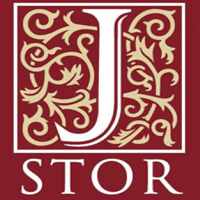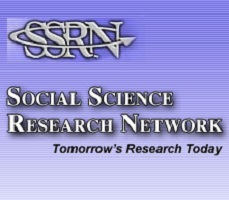دانلود رایگان ترجمه مقاله دیدگاهی جایگزین درباره تاثیر AMR در بررسی سال ۲۰۰۲ – Sage 2014
دانلود رایگان مقاله انگلیسی وعده ها، مفروضات، یک دیدگاه جایگزین در مورد اثرات یاداشت آکادمی بررسی مدیریت در سال ۲۰۰۲ توسط شاین و ونکاترامن به همراه ترجمه فارسی
| عنوان فارسی مقاله: | وعده ها، مفروضات، یک دیدگاه جایگزین در مورد اثرات یاداشت آکادمی بررسی مدیریت در سال ۲۰۰۲ توسط شاین و ونکاترامن |
| عنوان انگلیسی مقاله: | Promises, Premises . . . An Alternative View on the Effects of the Shane and Venkataraman 2000 AMR Note |
| رشته های مرتبط: | مدیریت، مدیریت کسب و کار و کارآفرینی |
| فرمت مقالات رایگان | مقالات انگلیسی و ترجمه های فارسی رایگان با فرمت PDF میباشند |
| کیفیت ترجمه | کیفیت ترجمه این مقاله متوسط میباشد |
| نشریه | سیج – Sage |
| کد محصول | f417 |
|
مقاله انگلیسی رایگان (PDF) |
دانلود رایگان مقاله انگلیسی |
|
ترجمه فارسی رایگان (PDF) |
دانلود رایگان ترجمه مقاله |
|
خرید ترجمه با فرمت ورد |
خرید ترجمه مقاله با فرمت ورد |
| جستجوی ترجمه مقالات | جستجوی ترجمه مقالات مدیریت |
|
بخشی از ترجمه فارسی مقاله: مقدمه |
|
بخشی از مقاله انگلیسی: The Promise of Entrepreneurship (ENT)—More Than a Decade Later We congratulate Shane and Venkataraman (S&V) on the praise they have garnered for their Academy of Management Review (AMR) Note The Promise of Entrepreneurship as a Field of Research (2000). The recognition of that particular work highlights the importance of the field of ENT as a fertile ground for theories that are relevant to the larger business phenomena. In this article, we provide alternative interpretations (contrasting the recent 2012 AMR reflections of S&V) of what their 2000 AMR Note has meant, especially to ENT, in the 12 years since its publication.1 We do so by asking different questions than the ones S&V asked in their recent reflection pieces in AMR. The Note was a short atheoretical article that defined a phenomenological domain of the infant management field of ENT as the nexus of the individual and the opportunity, focusing more on processes than outcomes. Although the most-cited article in ENT, and one that provided several definitions around which the field could congregate, the ENT field remained more than a decade since its publication a field arguably struggling for legitimacy, with no core distinctive theory (Blackburn & Kovalainen, 2009). Our analysis of the Note and its effects provides lessons for other newly emergent management-related fields by focusing on how high but nonnormative citing of an article may unfortunately impede the theory-building necessary to legitimize a field. We first critique the Note and then argue its possible negative effects. We begin by asking where and how the Note was cited, and then ask why the Note was cited. We then answer what impact the Note has had on the ENT field and how we can move forward from that unfortunate impact. Where and How the Note Was Cited In contrast to Shane (2012) and Venkataraman, Sarasvathy, Dew, and Forster (2012), we find that the Note has not made a positive impact on the progress of theory because of where and how it has been cited. There has been minimal use of the Note to build or test theory in the top “general” outlets. AMR has published more than 30 ENT-related articles since the Note and none of those built on it (while several did cite it). When we look across the 24 “top business journals”۲ over the past 12 years, we find, on average, that each of the top management discipline journals published just more than one article every 2 years that cited the Note. Only one of these articles built on the Note, and it found that the Note’s “nexus” definition was incomplete (Florin, Lubatkin, & Schulze, 2003). It appears that the Note has had its greatest citation rates in alternative scholarly outlets, such as the Journal of Business Venturing (JBV)—a specialized journal where one of the Note’s coauthors was the editor. Let’s consider then in more detail how the Note was cited. Shane’s (2012) reflection summarizes his own informal bibliometric analysis by suggesting that the Note was cited mainly in reference to four ideas: (a) the distinctive domain of the field, (b) the definition of ENT as a process rather than a trait, (c) ENT as a nexus of individuals and opportunities, and (d) innovation as new means–ends relationships. Venkataraman et al.’s (2012) reflection summarizes their own informal bibliometric analysis by suggesting that the Note was cited mainly in reference to three ideas: (a) the individual differences across entrepreneurs, (b) the nature of entrepreneurial opportunities, and (c) the identification of entrepreneurial actions. Our bibliometric analysis of the Note in the top general business journals (see Table 1) identified three ideas as most often cited: (a) the nature of opportunities, (b) the definitions of ENT terms, and (c) the differences among individual entrepreneurs.3 The main problem with how the Note was cited does not lie with any disagreement over which ideas were most cited (even though each analysis considered different sets of scholarly outlets). The main problem lies with the manner in which citations used the Note. Our analysis reveals the Note was cited as a terminological reference rather than as a basis for theory-building or empirical testing. When an article needed to make reference to the term opportunity, or entrepreneur, or entrepreneurship; to questions over the domain or definition of the field; to the general steps of venture creation; or to differences in entrepreneurial activity, then the Note—as a terminology-rich, short, descriptive piece, published in a top journal—was a convenient citation source. This is a very different type of “impact” on the field than that claimed by the Note’s authors. Shane (2012) claims that the Note “has significantly impacted the field of entrepreneurship” (p. 10) in more substantive ways, such as influencing the focus of the field—for example, the Note’s “introduction of the concept of opportunity has changed the focus of the field of entrepreneurship over the past ten years” (p. 16). We see no proof to support such a claim. While there may exist a correlation between the timing of the Note and the increase in articles covering the topic of opportunity, there is no evidence of causation. 4 In fact, the percentage of work on opportunities (in an ENT context) that cite the Note is quite low (less than 10%). Also, the Note did not introduce the concept of opportunity; the Note drew from more foundational and highly cited work—for example, of Casson, Drucker, Kirzner, Schumpeter, and Venkataraman (see Shane & Venkataraman, 2000). And, there were several alternative explanations for the growth of work on opportunities at that time—for example, the Internet boom and bust combined with the growth of day-trading and venture capital activity focused attention on opportunity valuation from 2000 on. In fact, there may have been a realization that the decades of work on traits-based ENT research was of limited value, and it was time to shift the research focus elsewhere; the topic of opportunities was an obvious choice given this is one of the main criteria that venture capitalists use to evaluate a new venture (e.g., MacMillan, Siegel, & Narasimha, 1985). In sum, we simply do not see that the Note had a “significant” influence on management research. It did not influence research at the top generalist journals. The Note’s core ideas were not used substantively—that is, as a basis for empirical testing or as a basis for theory-building. By contrast, the articles in those journals citing the Note did test and build on work by Stevenson, Kirzner, and Levi-Strauss, and did test and build on concepts like entrepreneurial orientation, the relational view, the knowledge-based view, and hypercompetition.5 In other words, while the Note may have generated citations, there is little evidence of a positive influence on theory-building in the ENT field or in the broader management sciences. |



